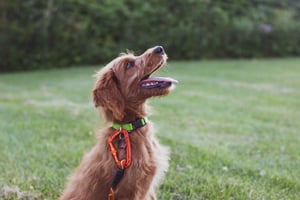Training your 9 week old puppy can be a daunting task. With the right guidance, though, you can...
The Ultimate Guide to Basic Puppy Training
Training a puppy can be a daunting task for many pet owners. But with the right tips and tricks, it can be a fun and rewarding experience for both you and your pup. In this guide, you will learn the essential basics of puppy training – from the best methods to use, to the most common mistakes to avoid. Read on to find out more about basic puppy training.
What is Basic Puppy Training?
Basic puppy training is the process of teaching a puppy to obey commands and understand acceptable behaviour. It is important to start training early, as puppies are more receptive to learning when they are younger. Basic puppy training can include teaching commands such as sit, stay, and come, as well as reinforcing good behaviour, such as not jumping or barking excessively.
The Benefits of Basic Puppy Training
Basic puppy training is beneficial for both you and your pup. It can help your pup feel more secure in their environment, as they will understand the boundaries and limits you set. It can also help to create a strong bond between you and your pup, as it encourages communication and trust. Training can also help to reduce problem behaviours such as excessive barking or chewing.
Methods of Basic Puppy Training
There are several methods of basic puppy training that you can use, depending on your pup's personality and needs. Here are some of the most popular methods:
- Positive reinforcement – with this method, you reward good behaviour with treats or praise. This is one of the most effective methods of training as it encourages your pup to repeat the behaviour.
- Clicker training – this method uses a clicker to mark the desired behaviour. You can then reward your pup with a treat or praise. This method is often used to teach complex behaviours or tricks.
- Crate training – this is a great way to help your pup feel secure and comfortable in their crate. You can use treats and positive reinforcement to encourage your pup to enter their crate and stay there until you let them out.
- Leash training – this is an important skill for your pup to learn. You can use treats and positive reinforcement to encourage your pup to walk on a leash without pulling.
Common Mistakes to Avoid in Basic Puppy Training
When it comes to basic puppy training, there are a few common mistakes that you should avoid. Here are some of the most common mistakes:
- Not starting early enough – it is important to start training your pup as soon as possible. This will help them to learn faster and more effectively.
- Not using positive reinforcement – using positive reinforcement is the best way to teach your pup. It is important to reward good behaviour with treats or praise.
- Not being consistent – it is important to be consistent with your commands and expectations. If you are not consistent, your pup will become confused and will not learn as quickly.
- Not setting boundaries – it is important to set boundaries for your pup. This will help them to understand what behaviour is acceptable and what is not.
Conclusion
Basic puppy training is an important part of owning a dog. It is important to start training early, as puppies are more receptive to learning when they are younger. There are several methods of basic puppy training that you can use, such as positive reinforcement, clicker training, crate training, and leash training. It is also important to avoid common mistakes, such as not starting early enough, not using positive reinforcement, not being consistent, and not setting boundaries. With the right tips and tricks, basic puppy training can be a fun and rewarding experience for both you and your pup.



